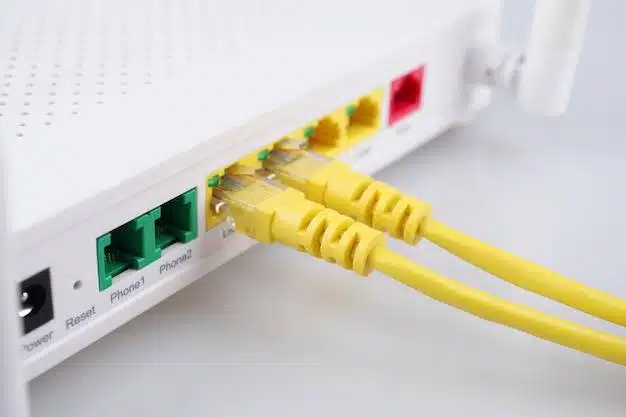
The rapid growth of the Internet of Things has transformed how we interact with technology in our daily lives. From smart thermostats to industrial sensors, IoT devices have become integral components of modern infrastructure. However, managing these connected devices while maintaining robust network security presents unique challenges, particularly when dealing with firewall configurations.
Understanding IoT Device Security Challenges
When IoT devices are deployed in networked environments, they often operate behind a firewall that serves as a critical security measure. This protective barrier helps prevent unauthorized access to sensitive systems and data. However, the same security features that protect networks can sometimes complicate legitimate access to IoT infrastructure.
The challenge becomes more complex when considering that many IoT devices come with limited built-in security protocols. Unlike traditional computing systems that receive regular security updates, these devices may have minimal security features (Cybersecurity) or inconsistent update mechanisms. This creates a delicate balance between maintaining connectivity and ensuring adequate protection against security threats.
Network Firewall Solutions
A network firewall serves as the primary defense mechanism for IoT deployments. These systems monitor and control incoming and outgoing network traffic based on predetermined security policies. They examine data packets, IP addresses, and port configurations to determine whether communications should be allowed or blocked.

Traditional firewall approaches work by analyzing traffic patterns and applying firewall rules that govern access control. However, IoT networks often require more nuanced approaches due to the diverse nature of connected devices and their communication protocols.
Embedded Firewall Options
Some advanced IoT devices include embedded firewall capabilities directly on individual IoT devices. This approach provides an additional layer of security by implementing protection at the device level rather than relying solely on network-level controls.
How IoT Firewalls Work
IoT firewalls help protect devices and networks by implementing multiple security mechanisms. They analyze internet traffic flowing to and from IoT devices connected to the local network or local area network. The firewall examines various aspects of network communications, including source and destination information, to make access decisions.
When devices attempt to communicate, the firewall evaluates the request against configured security requirements. This process helps identify potential security risks and prevents malicious activities from reaching protected systems.
Configuring Firewall Settings for IoT Access
Port Configuration and Management

Proper port management is essential for enabling legitimate access while maintaining security. Administrators must carefully configure the firewall to allow necessary communications while blocking potentially harmful traffic. This involves identifying which ports IoT devices use for normal operations and establishing appropriate firewall restrictions.
IP Address Management
Managing IP addresses effectively is crucial for IoT security solutions. Devices connected to the internal network require proper addressing schemes that work within existing firewall configurations. This includes considerations for both static and dynamic addressing approaches.
Remote Access Solutions
Virtual Private Network Implementation

A virtual private network provides secure remote access to IoT devices behind a firewall. This approach allows authorized users to connect to your IoT devices safely, even when accessing them from external locations. VPN solutions create encrypted tunnels that protect data transmission while enabling necessary connectivity.
Remote Desktop and Access Control
Remote desktop solutions can facilitate access to devices remotely while maintaining security protocols. These tools allow administrators to monitor and control IoT systems without compromising the protective barriers established by firewall security measures.
Security Considerations and Best Practices
Addressing Security Vulnerabilities
IoT devices pose unique security challenges due to their diverse operating systems and communication protocols. Many devices lack robust security features, making them potential entry points for security breaches. Organizations must develop comprehensive strategies to protect these devices while ensuring operational functionality.
Implementing Consistent Security Policies
Maintaining consistent security across all devices and protocols requires careful planning and implementation. This includes regular assessment of security posture and updating security measures as new threats emerge. Organizations should establish clear security requirements that address both current and future needs.
Network Segmentation Strategies
Effective network segmentation helps isolate IoT devices from critical business systems. This approach limits potential damage from security issues while maintaining necessary connectivity for device operations. Proper segmentation also simplifies access to devices and reduces overall security challenges.
Industrial IoT and Enterprise Considerations
Securing Industrial IoT Deployments
Industrial IoT environments often have specific security needs that differ from consumer applications. These systems may require specialized firewall capabilities and security protocols to protect sensitive industrial processes and data security requirements.
Managing Multiple Device Types
Organizations often deploy various types of devices, including security cameras and sensors, each with different communication requirements. Effective management requires understanding how different devices use network resources and implementing appropriate security solutions for each device category.
Monitoring and Maintenance
Ongoing Security Assessment
Regular monitoring of firewall settings and device behavior helps identify potential security issues before they become serious problems. This includes tracking access patterns, reviewing security logs, and updating security configurations as needed.
Updates and Patch Management
Maintaining current security updates for both IoT devices and firewall systems is essential for long-term security effectiveness. Organizations should establish procedures for regular updates while ensuring that changes don’t disrupt critical operations.
Troubleshooting Common Access Issues
Connectivity Problems

When users cannot access to IoT devices, the issue often relates to firewall configuration or network connectivity. Systematic troubleshooting approaches help identify whether problems stem from security restrictions, device malfunctions, or network infrastructure issues.
Performance and Reliability
Ensuring that security measures don’t negatively impact device performance requires careful balance. Organizations must configure security features to provide adequate protection without creating unnecessary barriers to legitimate device operations.
Future Considerations
Evolving Security Landscape
As IoT technology continues to evolve, security requirements and threats will also change. Organizations must stay informed about emerging security challenges and adapt their approaches accordingly. This includes evaluating new security technologies and updating existing security and privacy policies.
Scalability and Growth
Planning for future growth in IoT deployments requires scalable security solutions that can accommodate increasing numbers of connected devices. This includes considering how security measures will perform as networks expand and device diversity increases.
Conclusion
Successfully managing access to IoT devices behind firewalls requires a comprehensive approach that balances security needs with operational requirements. By understanding the various security measures available and implementing appropriate configurations, organizations can protect their IoT infrastructure while maintaining the connectivity necessary for effective device operations.
The key to success lies in developing tailored security solutions that address specific organizational needs while remaining flexible enough to adapt to changing requirements. Through careful planning, proper implementation, and ongoing monitoring, organizations can securely access IoT devices while maintaining robust protection against evolving security threats.
Whether dealing with home network configurations or complex industrial deployments, the principles of effective firewall management remain consistent: understand your security requirements, implement appropriate controls, and maintain vigilance through ongoing monitoring and updates. This approach ensures that IoT devices can operate effectively while contributing to overall network security rather than compromising it.




